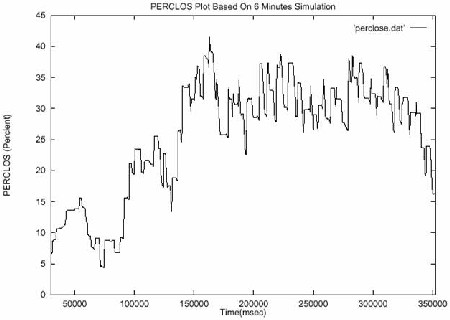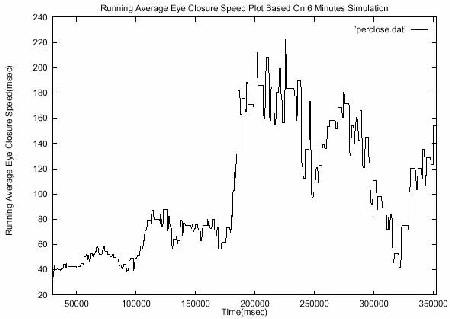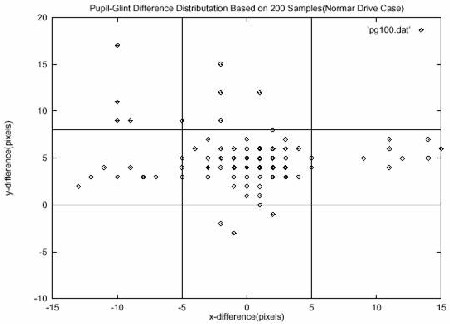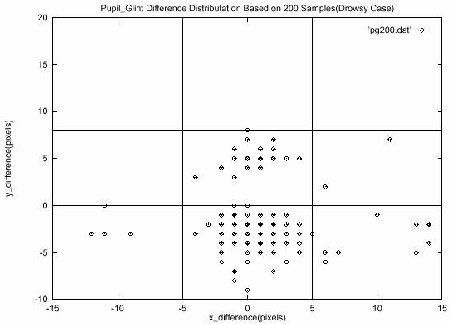|
|
|
Non-invasive Techniques for Human Fatigue Monitoring
Qiang Ji, Ph.D., Assistant Professor
Dept. of Electrical, Computer, and Systems Engineering, Rensselaer Polytechnic Institute
JEC 6044, Troy, NY 12180-3590
Phone: (518) 276-6440
Email: qji@ecse.rpi.edu
WWW: www.ecse.rpi.edu/homepages/qji/
|
| |
|
Overview
|
|
| |
|
System Flowchart

|
|
Visual Behaviors
Visual behaviors that typically reflect a person's level of fatigue include
- Eyelid movement
- Head movement
- Gaze
- Facial expressions
|
|
Eyelid Movements
- Tracking Eyes
- Develop techniques that can robustly track eyes under different face orientations, illuminations, and large head movements.
- External link to real time multi-module eye tracking.
- Compute Eye movement parameters
|
|
Gaze (Pupil Movements)
- Real time gaze tracking
- No calibration is needed and allows natural head movements!
- Gaze parameters
|
|
Head Movement
- Real time head pose tracking
- Perform 3D face pose estimation from a single uncalibrated camera
- Head movement parameters
- External link to real time face pose tracking.
|
|
Facial Expressions
- Tracking facial features.
- Recognize certain facial expressions related to fatigue like yawning.
- Building a database of fatigue expressions.
- External link to real time facial features tracking.
|
|
Fatigue Modeling
- Knowledge of fatigue is uncertain and from different levels of abstraction.
- Fatigue represents the affective state of an individual, is not observable, and can only be inferred.
|
|
Overview of Our Approach
Propose a probabilistic framework based on Bayesian Networks (BN) to
- model fatigue.
- systematically integrate various sources of information related to fatigue.
- infer and predict fatigue from the available observations and the relevant contextual information.
|
|
Bayesian Networks Construction
- A BN model consists of target hypothesis variables (hidden nodes) and information variables (information nodes).
- Fatigue is the target hypothesis variable that we intend to infer.
- Other contextual factors and visual cues are the information nodes.
|
|
Causes for Fatigue
Major factors to cause fatigue include:
- Sleep quality.
- Circadian rhythm (time of day).
- Physical conditions.
- Working environment.
|
|
Bayesian Network Model for Monitoring Human Fatigue

|
|
Interface with Vision Module
- An interface has been developed to connect the output of the computer vision system with the information fusion engine.
- The interface instantiates the evidences of the fatigue network, which then performs fatigue inference and displays the fatigue index in real time.
|
|
Conclusions
- Developed non-intrusive real-time computer vision techniques to extract multiple fatigue parameters related to eyelid movements, gaze, head movement, and facial expressions.
- Develop a probabilistic framework based on Bayesian networks to model and integrate contextual and visual cues information for fatigue monitoring.
|
|
|










